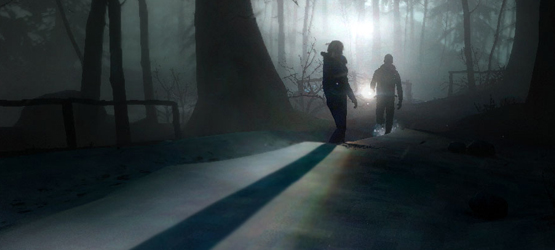I watched Sam step off the bus. Ten hours until dawn. My choices in those next ten hours would determine whether she and seven of her friends lived or died. Initially, Until Dawn pushes the concept of the butterfly effect very hard. This is the idea that a butterfly flapping its wings today could be the cause of a hurricane in a year, or in simpler terms, the chains of small events that can lead to devastating outcomes. While this was probably for the benefit of those who haven’t been inundated with coverage and trailers for the last year, it was a relief when the tutorials ended and I was finally able to settle in to the unsettling nature of a night of horror on Blackwood Mountain.
Until Dawn plays much like a Quantic Dream horror game, and if I didn’t know that it was Supermassive behind this one, I would think that this was the successor to Heavy Rain and Beyond: Two Souls. That means it’s a narrative and cinematic heavy game, with a lot of the walking around, conversations, and quick-time events (QTEs) left to player input. Until Dawn even has its own Press X to Jason moment as a character continually yells out “Ash? Ash!?! Ashley!?” though sadly, you don’t get to press X to call for Ashley. He does it all on his own.
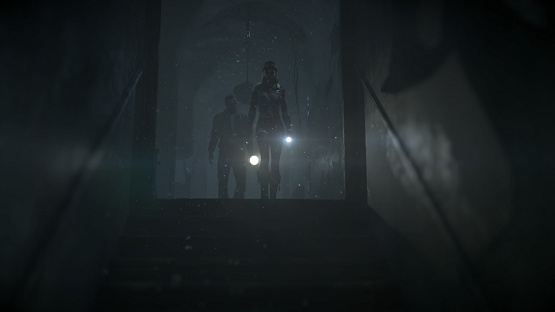
The cinematic nature of the game means that the visuals need to look good to immerse the player, and they do for the most part. I was impressed with how each character’s body and facial animations looked, though there were a few times that something just looked off and unnatural about the scene. Close-up camera angles paired with quick movements often saw frame-rates dropping. Character movement can be a little bit clunky when trying to explore for clues or totems, but overall these small faults didn’t get in the way of the tense nature that Supermassive was trying to achieve.
Something to Note Before You Begin
Before you start the game, here are a few tips. Turn off the lights and turn up the sound. It’s important to get the right mood for a game like this. Take note of the smattering of special features that give you a behind the scenes look at the development. It’s something I wish more developers would include in their games. Next, jump into the settings menu. Make sure to keep global stats off for your first time through so that other players’ decisions don’t affect your gut instinct. If you’ve got a PlayStation Camera, turn on this function. It will record your reactions at certain jump scare moments, appropriately titling these captures “cheap shots.” Don’t worry, the game doesn’t overly rely on jump scares. There’s plenty more to be afraid of than a few simple…no, actually, I think I’ll let you discover those on your own.
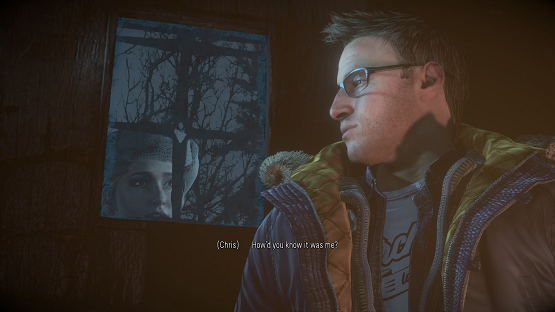
In fact, Until Dawn successfully blends the best elements of a whole slew of horror films, from campy summer slashers to torture porn, and supernatural thrillers to creature movies. There’s even an aspect of psychological thrillers thrown in for good measure. You actually get your own therapist in between chapters who will help tailor the game to your personal fears, and I implore you, answer his questions honestly for the best experience for you.
While I don’t want to give anything away, I’ll say the entire ten hours isn’t a stretched out version of I Know What You Did Last Summer. The story is actually one of the most impressive points of the game, and I found it to be well written and paced from beginning to end. The characters and narrative may start off in a completely predictable and cliche way, with a bunch of horny teenagers making consistent sex jokes and bad decisions for the first quarter of it, but Until Dawn accomplishes what a traditional length feature film cannot. It evolves the story arc, somewhat believably develops the characters, and perhaps the most important part of all, it gives the viewer control.
They’re Dead. They’re Dead Because of Me
For my first time through, I was trying desperately to save all of the characters. I would try to make intelligent decisions to keep everyone grouped together. I’d try to be reasonable in conversations. I tried, I really did. In the end, only two of the eight friends survived the night. Some were killed through carelessness on my part. I mean, I did play the entire game in a single ten hour sitting from evening until about three in the morning. My nerves were a little fried. I was living their nightmare with them. So when it came to one of the times where I had to hold the controller as still as possible — perhaps the most stress inducing quick-time event — I screwed up and it didn’t end well.
It all just went downhill from there. A number of bad decisions and failed QTEs later, the credits rolled with two characters in some severe need of therapy. Knowledge is power though, and the next night I booted up the game with the intention of truly saving everyone. Scattered around Blackwood Mountain there are a variety of clues to unravel the mystery of what’s going on and how it all connects together, as well as a series of collectible Native American totems that give a brief vision of a possible future. Armed with these, and the knowledge from my first playthrough, I was able to make another run and successfully save everyone, though it wasn’t without its white knuckle moments and wondering how the butterfly effects of my decisions early on would impact each character later in the story.
The Cracks Begin to Show
On the third night, I decided that everyone would die. I would actively try to fail. I had really enjoyed my first two playthroughs, but my night of massacre on Blackwood Mountain is where the cracks in the game really began to show. I made the characters all angry at each other. I split everyone up where possible. I failed every quick-time event. Every. Single. One. It didn’t matter. Some characters just refused to die.
There are certain narrative points that each character needs to survive through, and Until Dawn course corrected every one of my actions until they had played their part, no matter how hard I tried to kill everyone off as early as possible. I even replayed a few chapters (unlocked after you complete the game once) numerous times to do everything I could to change the outcome, and was always met with disappointment. I also found plot holes when the game needed to follow a particular narrative path, but lacked the characters to do so (they can’t have possibly known about the cable car key!), or awkward moments when characters were just bystanders in scenes after they were expected to have been killed. I understand it’s a daunting task to script and change everything on if someone is alive or dead, but this is supposed to be an interactive experience, not a static film.
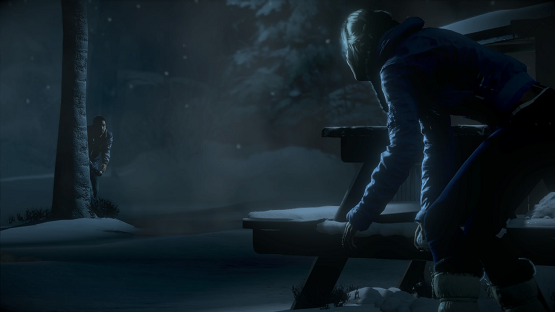
In the end, I did manage to kill everyone on playthrough number three, but I had to sit back in disbelief, because it was much harder to do than I imagined. There are several parts of the game that provide only a false sensation of tension, with no real weight behind success or failure. It did take me until my third time through to discover that, and I’m not about to tell you which decisions and QTEs matter and which ones don’t, so that you can enjoy your own first experience with Until Dawn.
Don’t Peek Behind the Curtain
I highly enjoyed both my first and second times playing, but it was a little disappointing to get a peek behind the curtain on that fated third run, which not only managed to kill all eight friends, but some of my own impressions about the game as well. The most disappointing part is that the story and other characters’ actions barely change based on the life or death of the other characters. Sam shouldn’t be saying she has to meet up with everyone else when she knows they’re all dead. It should have changed her actions. From my recollection, Heavy Rain actually had more dramatic narrative shifts in its conclusion based on four characters’ choices than Until Dawn’s final half does based on eight.
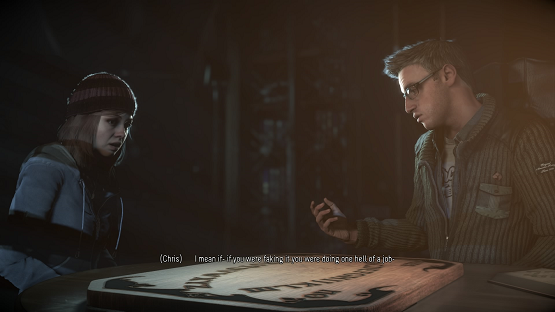
Coming from someone who has been through the game three complete times, at about 30 hours of total playtime, I will say that Until Dawn is worth playing, but do yourself a favor and don’t look up anything more about it. Disconnect and fully immerse yourself in the tension and the terror, feel the weight behind everything you do, and see how many of your characters you can have alive when dawn comes. That sensation of wondering what went wrong as the credits roll for the first time is a great one, and Supermassive has crafted an experience that is impressive the first time through. Once you know the magician’s secrets however, that carefully crafted experience begins to diminish and fade.
There’s a well written and unchanging lore here. It’s campy, but it’s horror and was never billed as anything else. The events on the mountain are set in motion and then wrapped around each of your decisions and characters’ fates. There are certain points and choices that will cause each character to die, some in a variety of nasty and horrific ways, and something about taking the reins of a character in a horror movie is just satisfying. Instead of yelling at the screen that they made a stupid choice, you get to beat yourself up for what you did to get them killed. When the sun rises and the final survivors are tallied up, you’ll realize Until Dawn isn’t perfect, but no matter which choices you make, it’s one hell of a ride.
Until Dawn review copy provided by publisher. For information on scoring, please read our Review Policy here.
-
The sense of tension on that first playthrough
-
Blended elements of a variety of horror movies
-
Characters can be killed in a number of interesting and gruesome ways
-
Character and narrative pacing over the full ten hours
-
Multiple playthroughs diminish the magic
-
Plot holes reveal themselves based on certain choices
-
Course correcting characters to meet critical narrative moments
-
Actively trying to fail reveals lack of weight behind a lot of QTEs and choices
-
Wait...these are supposed to be high school kids?
Until Dawn Info Dump
-
Until Dawn
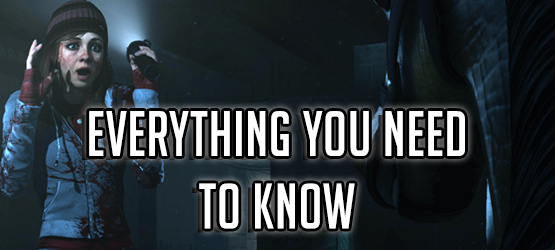
-
A PlayStation Move Title
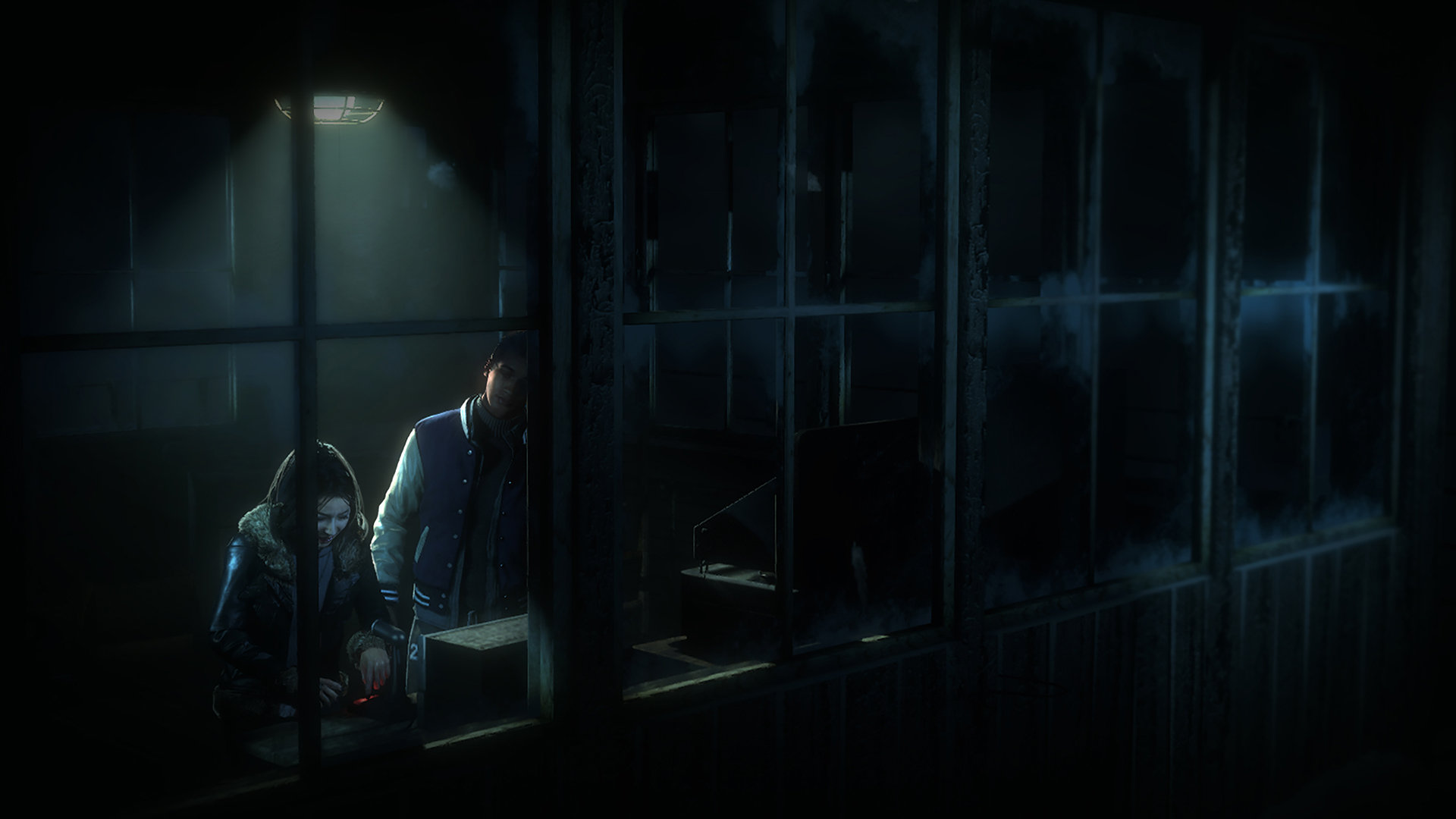
Announced during gamescom 2012, Until Dawn was originally a PlayStation Move title for the PS3. The story revolves around a group of friends on vacation who end up being stalked and attacked by a masked serial killer. As the protagonist, players will be facing a series of difficult decisions that determine what lays ahead for everyone.
Fun fact: at the time of the game's announcement, there were no plans for DualShock support.
-
Disappearance and Reappearance
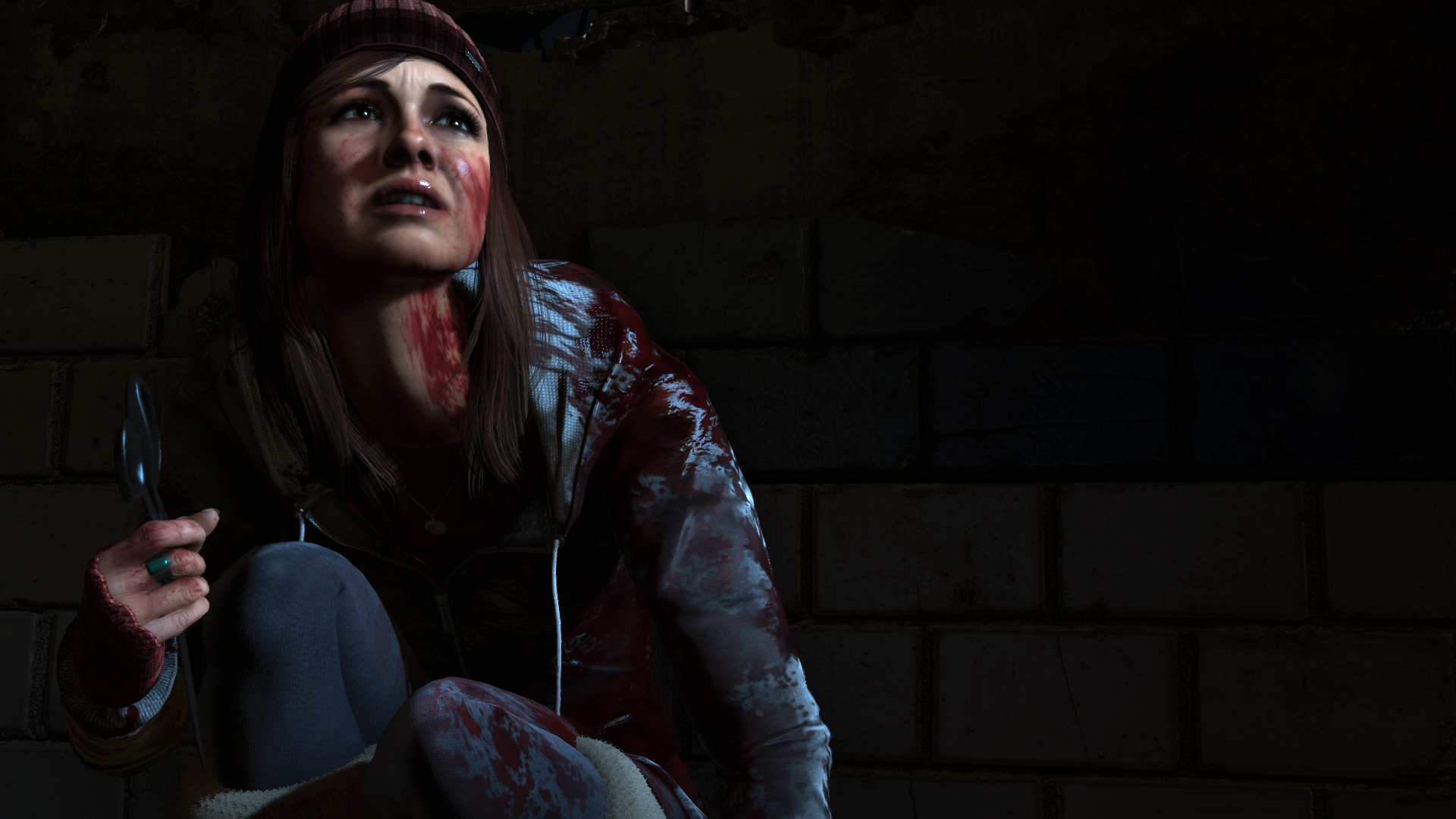
Until Dawn almost disappeared from the scene following its announcement and throughout 2013, Supermassive found itself dispelling reports of the game's cancellation. Following some rumors and teasers in early 2014, the game reappeared at gamescom 2014 as a PS4 exclusive title.
Click here to see some creepy gameplay footage from gamescom 2014.
-
Changes
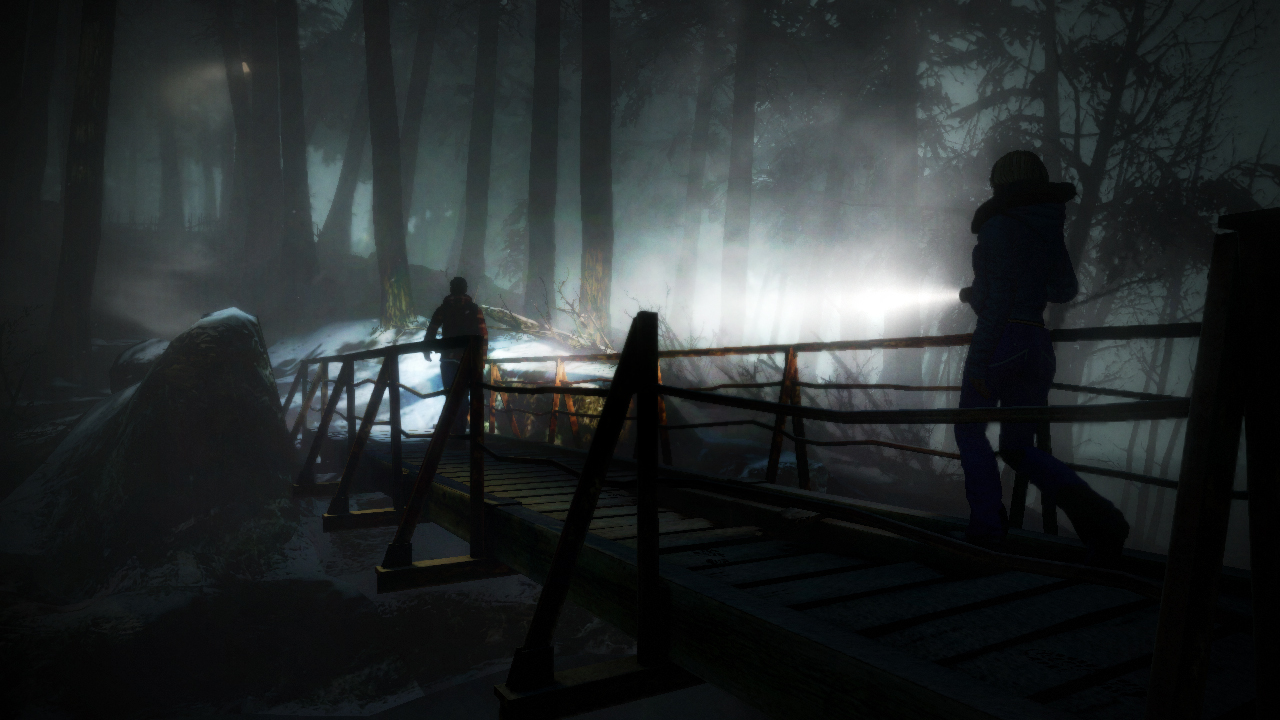
With the switch to PS4 came a few changes as well. An overwhelming amount of people weren't happy about Until Dawn being a PS Move title, resulting in Supermassive making the decision to allow the game to be played with a DualShock controller. However, with the PS4 being out at the time, the developer made the decision to go next-gen as opposed to making the change on the PS3.
For the visuals, Supermassive opted to use an updated version of the Killzone: Shadow Fall engine for "some amazing, cutting-edge facial animation, lighting and audio techniques to give compelling character performances in our creepy and realistic environments.”
-
Multiple Endings/No Restarts
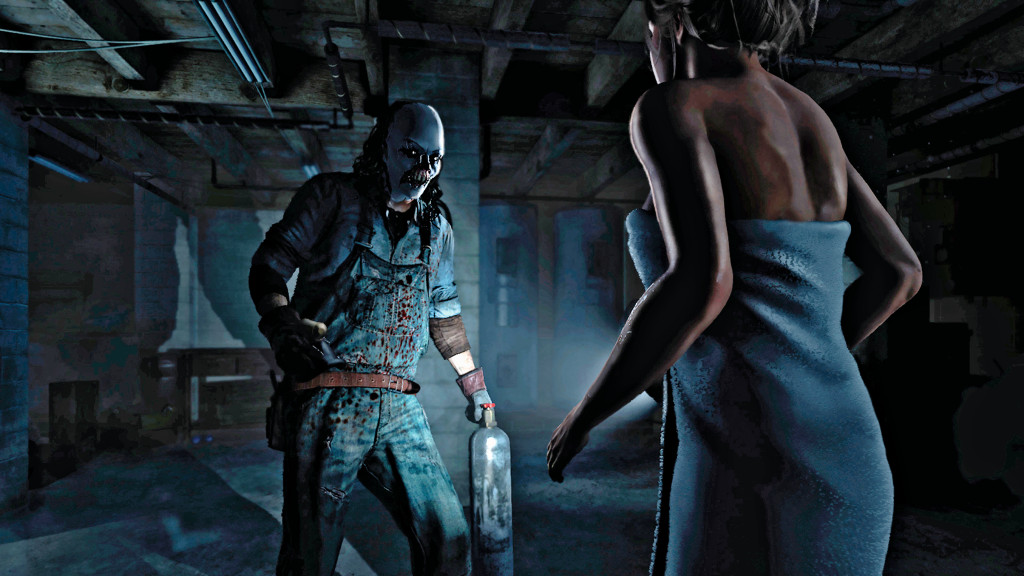
Until Dawn is around nine hours long, but don't let the game's estimated length fool you. According to Supermassive, the title comes with hundreds of endings and is designed to be played multiple times utilizing the "Butterfly Effect." The game prevents players from restarting to change their decisions, especially since they can have heavy consequences later on and will influence other characters' fates.
-
The Butterfly Effect
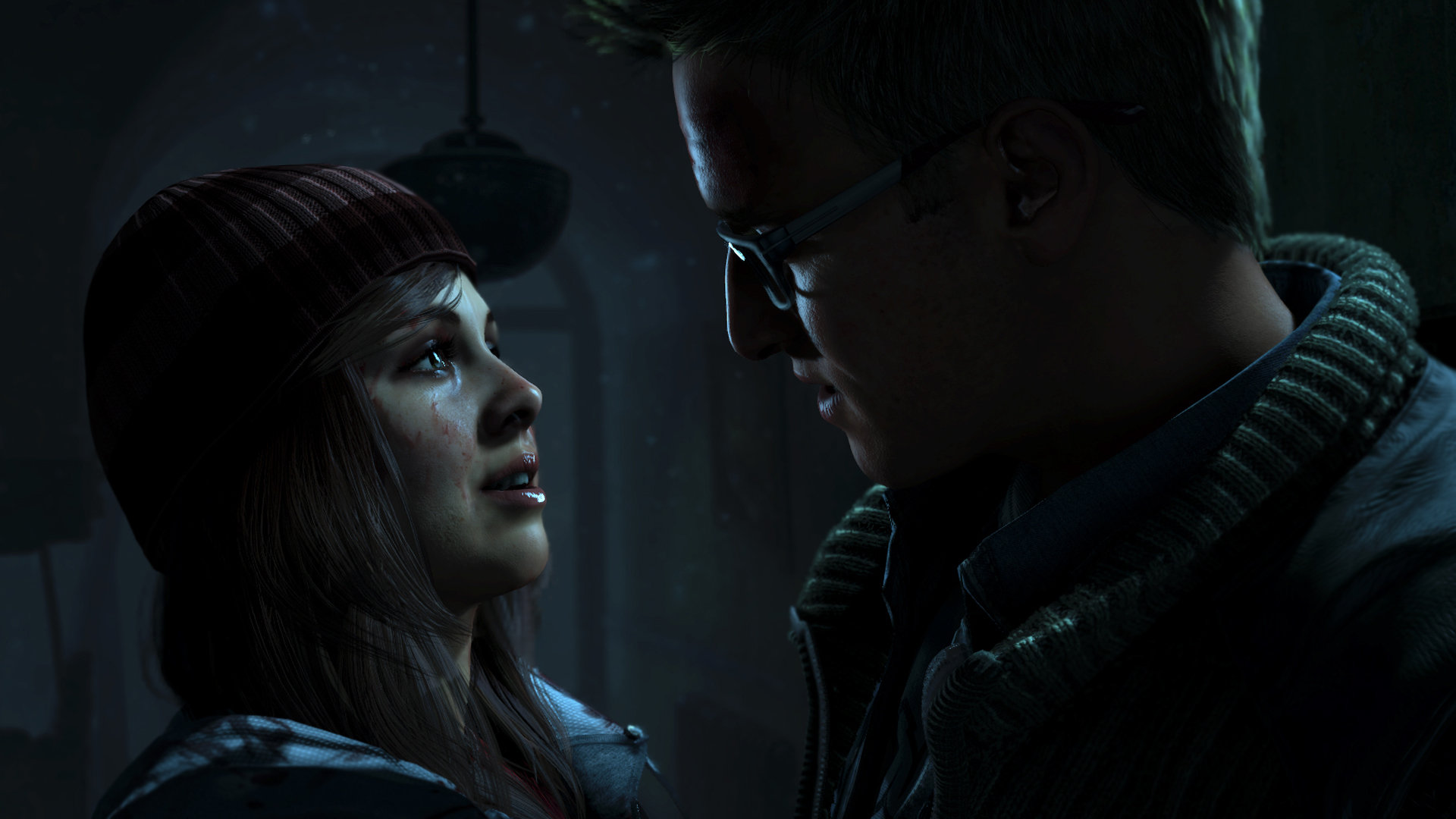
One of the most interesting features of Until Dawn is the Butterfly Effect system, which will present players with some really difficult decisions to make, the consequences of which might not be apparent right away but can transpire through surprising twists and turns later on. According to the developer, players won't know what impact their choices will have until after they've been made.
For more on the Butterfly Effect, watch this video. Sony also recently released another trailer that highlights how every decision players make can change their fate.
-
The Cast
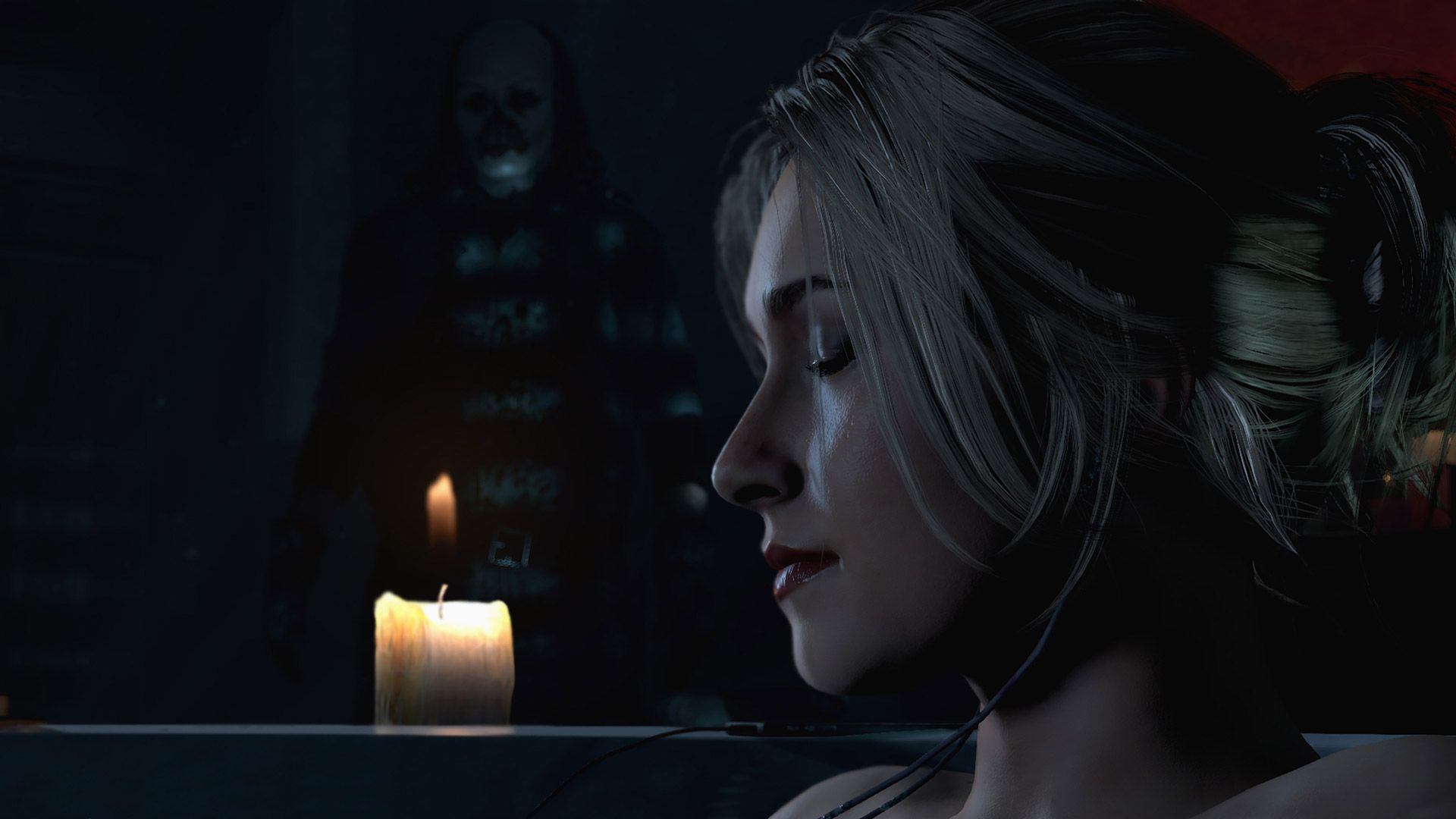
Until Dawn's cast includes:
Hayden Panettiere
Peter Stormare
Brett Dalton
Rami Malek
Galadriel Stineman
Noah Fleiss
Jordan Fisher
Nichole Bloom
Meaghan Martin
Ella Lentini
Larry Fessenden
Summer Bills
Brian McGuinness -
Spook Yourself Out
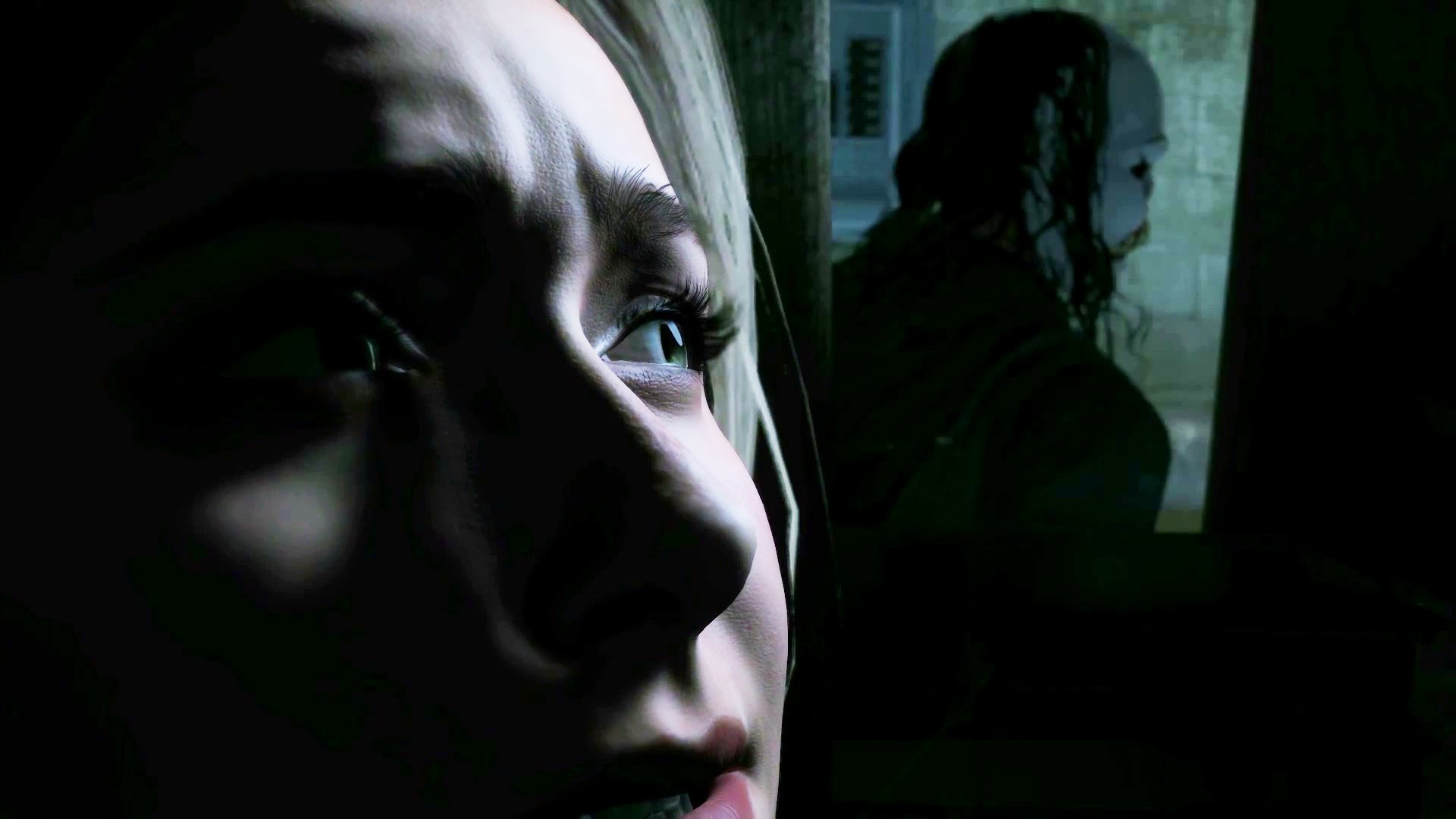
Still not convinced? How about this trailer that shows what can happen as a result of your decisions, or this disturbing footage from last year's Game Awards?
I don't know about you, but the Valentine's Day 2015 trailer certainly made my heart race!
-
Gameplay/Demo (Spoiler Alert)
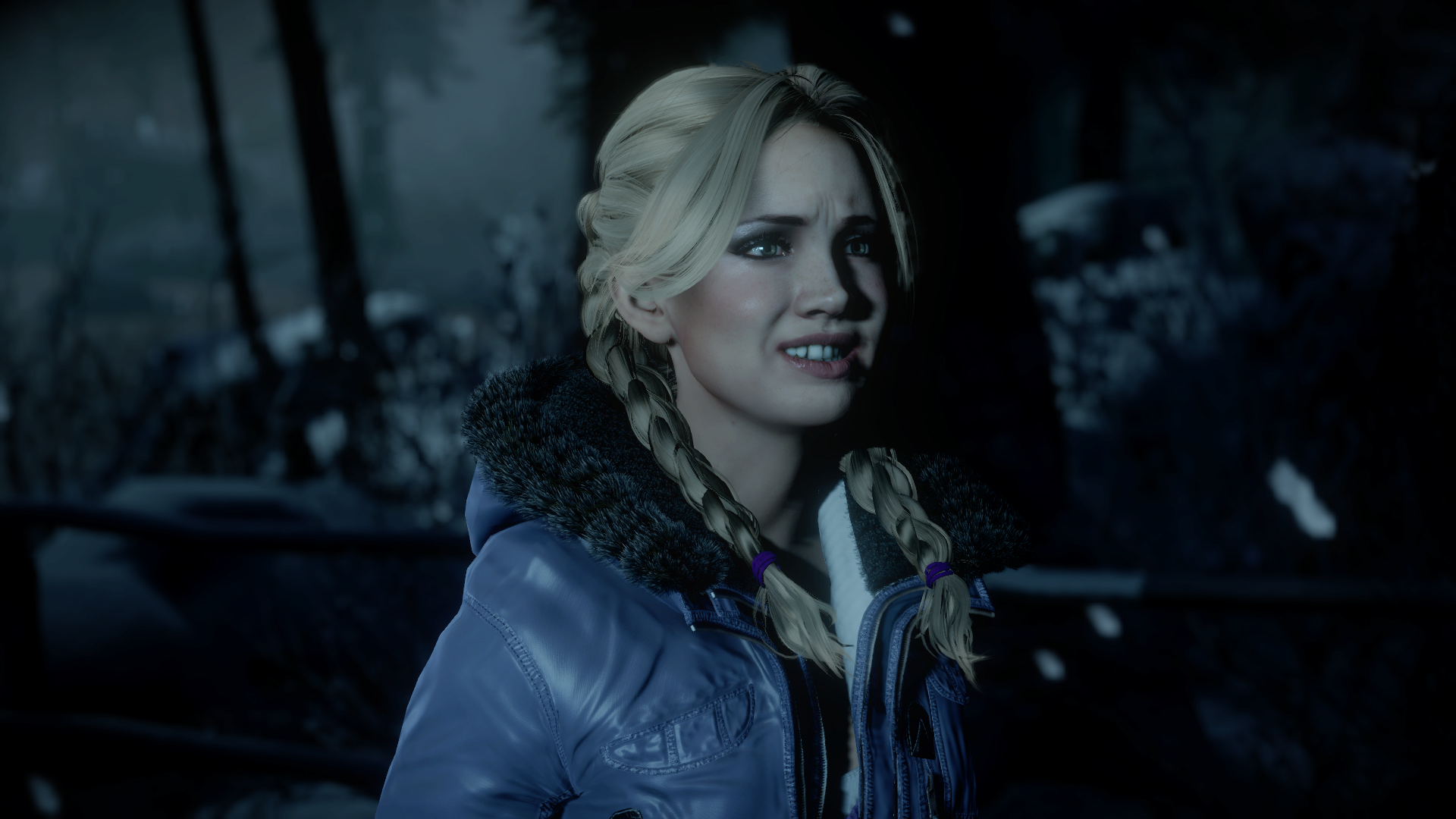
Those who aren't worried about potential spoilers and can't seem to get enough by watching the trailers should check out this PSX 2014 demo and/or this 20-minute gameplay footage.
-
Experience It Yourself
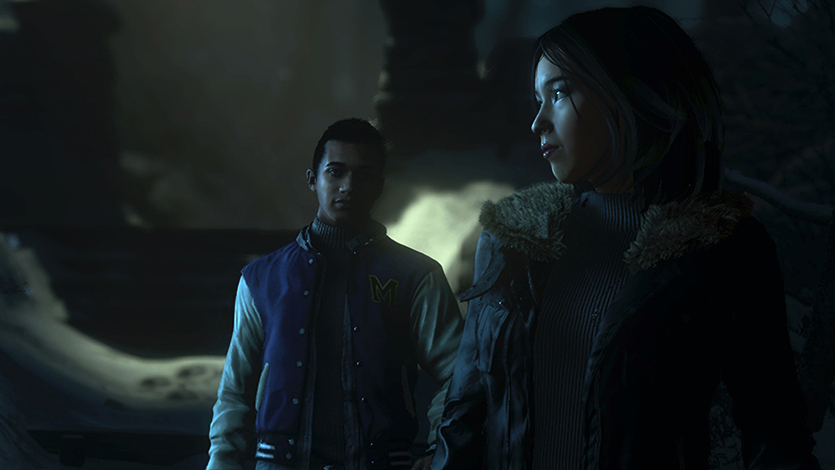
As if the previous trailers weren't enough, Sony recently released an interactive trailer that teases the kind of choices we'll be faced with in Until Dawn. Click here to experience it yourself!
The Director of Choices, Torben, said that the trailer is inspired by in-game scenarios. Players will carry "full responsibility" for the decisions they make.
-
Previews
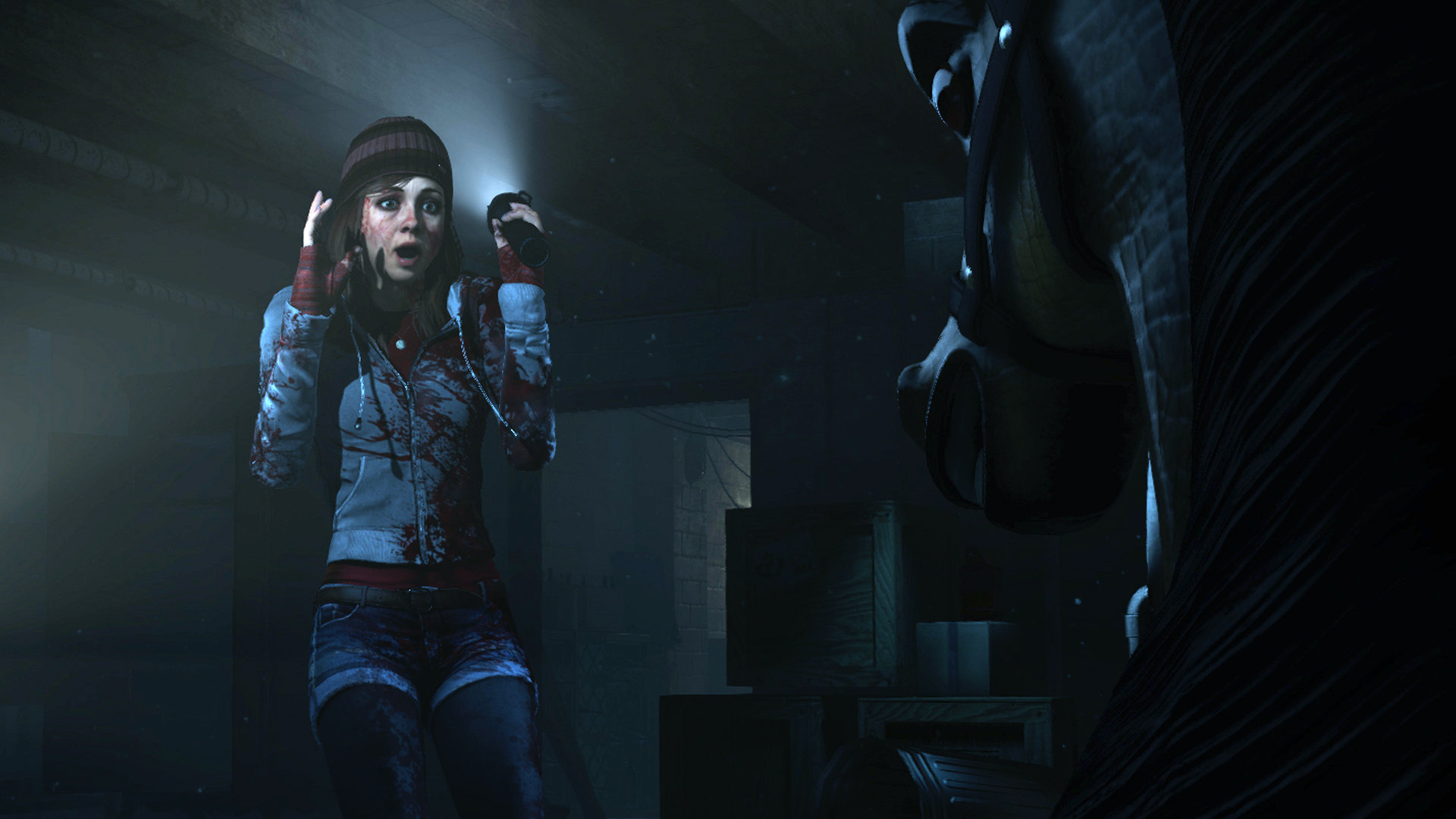
Worried about the lack of media coverage apart from trailers? We've got several previews for you to go through.
PSLS' Heath was still scared of the game a week after he played it at Tokyo Game Show 2014, Chandler had a blast with it at PlayStation Experience 2014 and noted that it somewhat felt like a Quantic Dream title, and more recently, Anthony got his hands on the game during E3 2015, which according to him is shaping up to be something quite unique.
-
Pre-Order Bonus
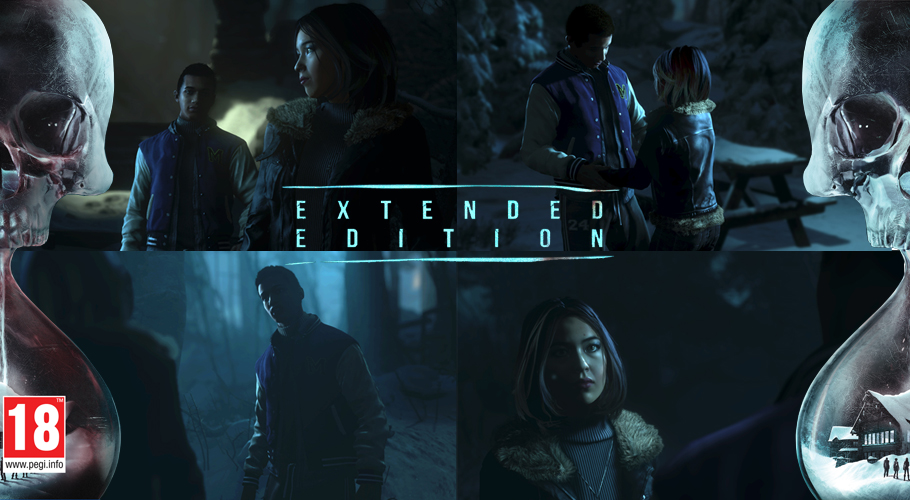
Those who pre-order Until Dawn will receive a special bonus scene for free. As Supermassive explains, “This exclusive scene sees Matt and Emily, a new couple, out on the mountain – but it’s not long until they start to suspect they aren’t alone.”
In Europe, Until Dawn will be available in three different editions: standard edition, extended edition, and the steelbook edition. For a list of countries that will receive the extended and steelbook editions, click here.
Until Dawn went gold in July so rest assured, it's coming next week!
